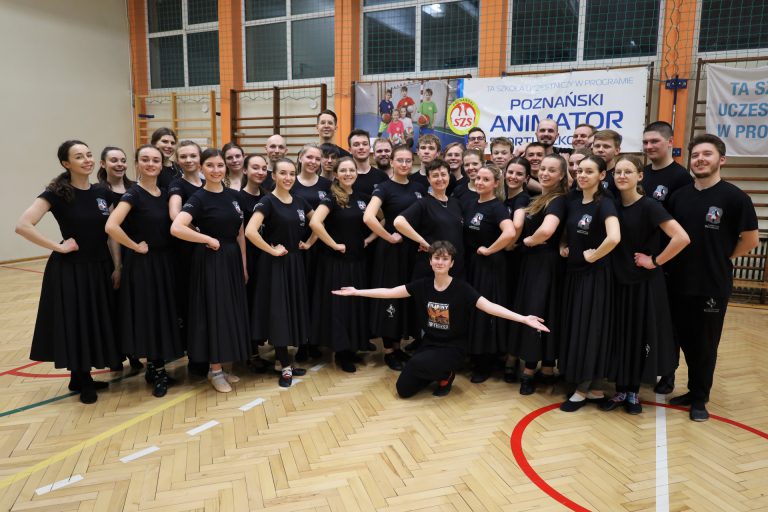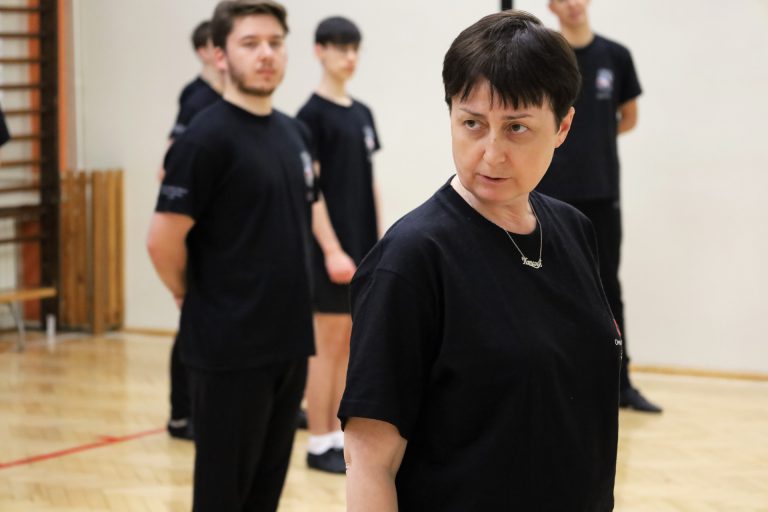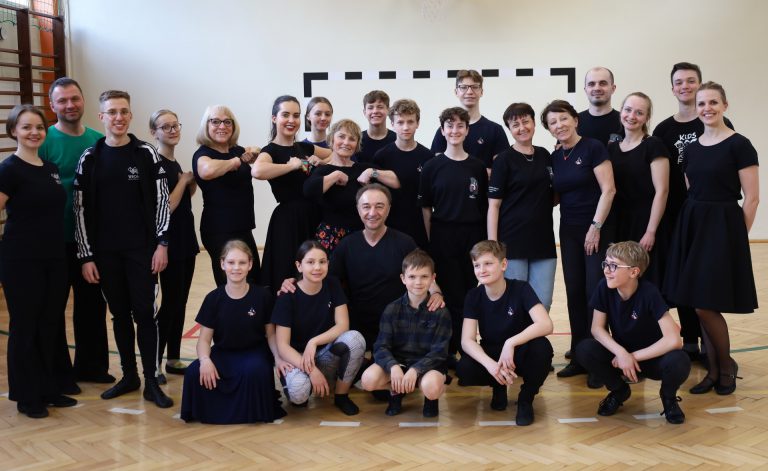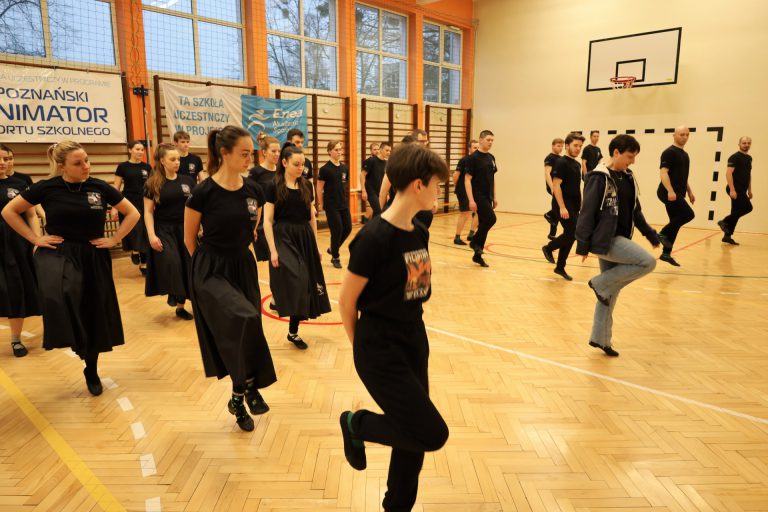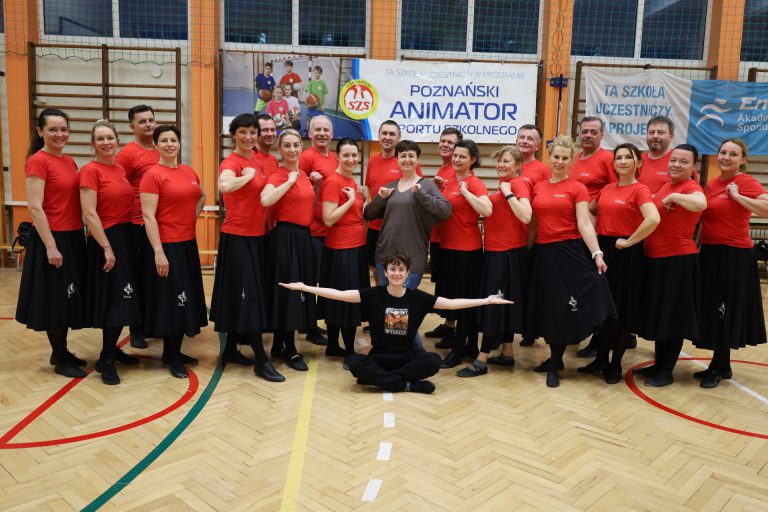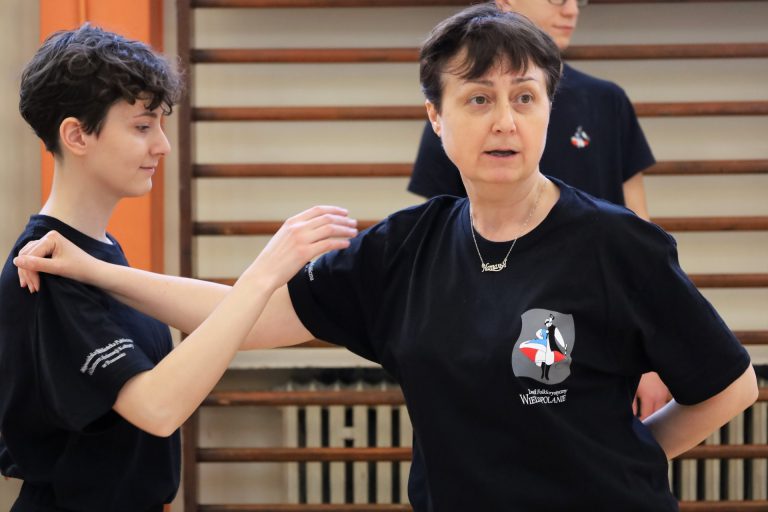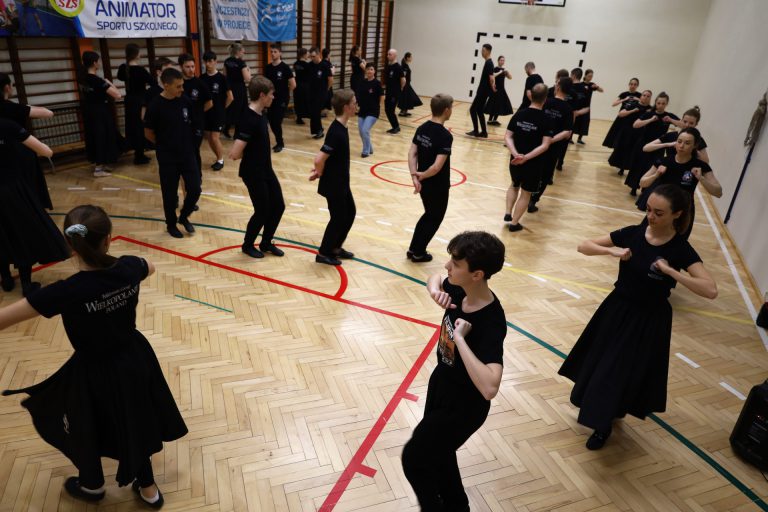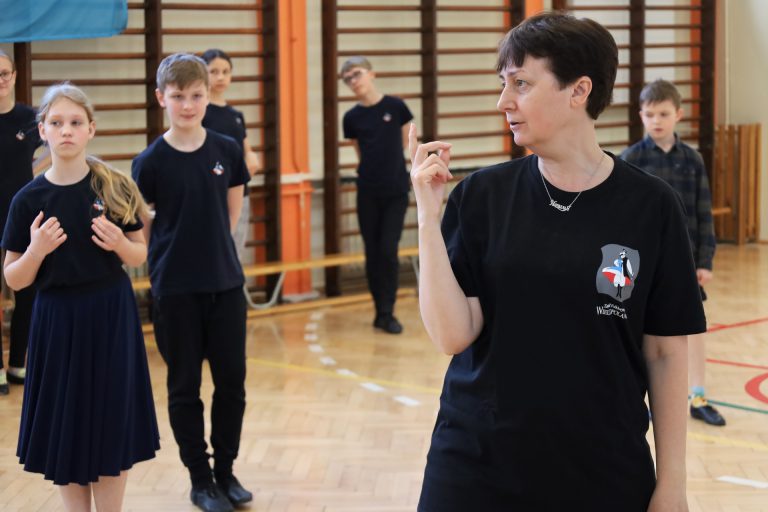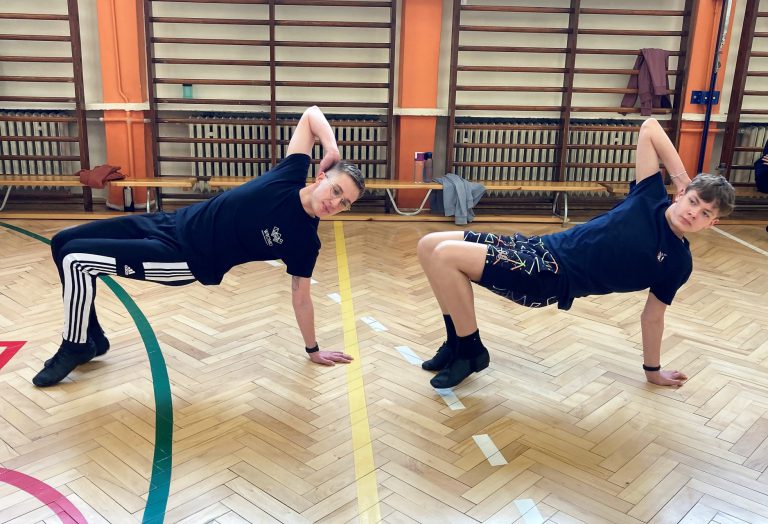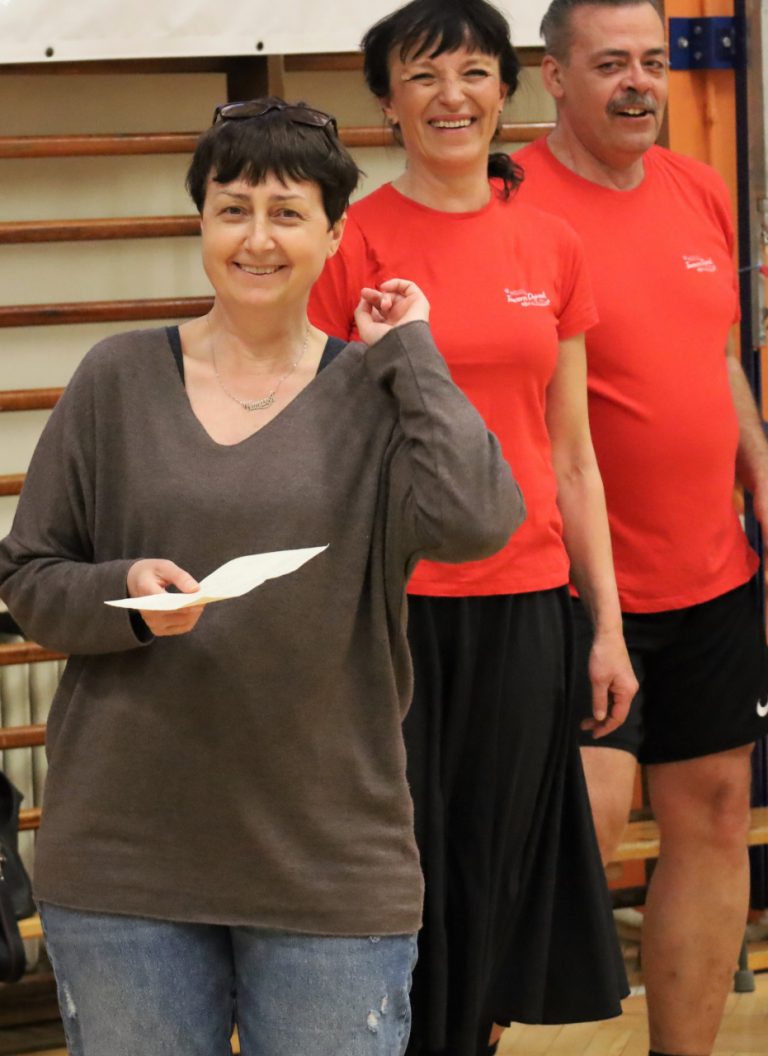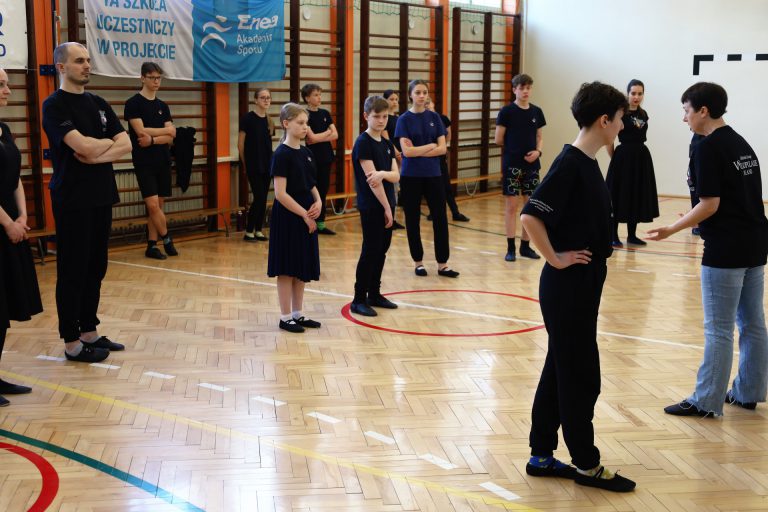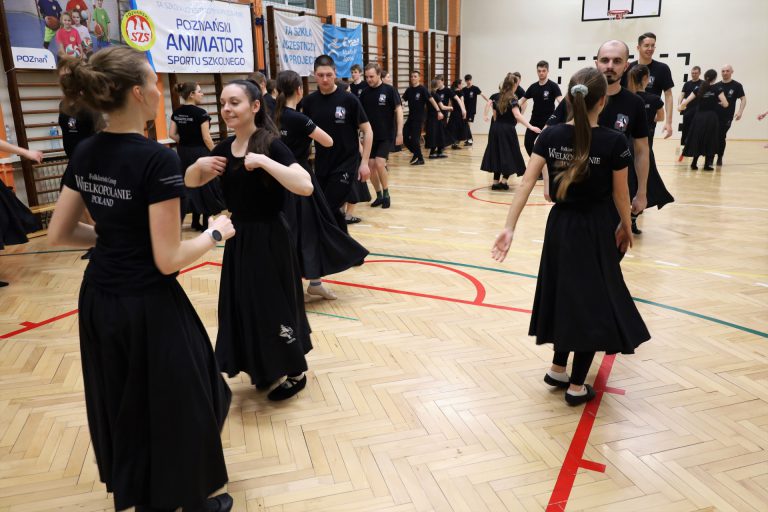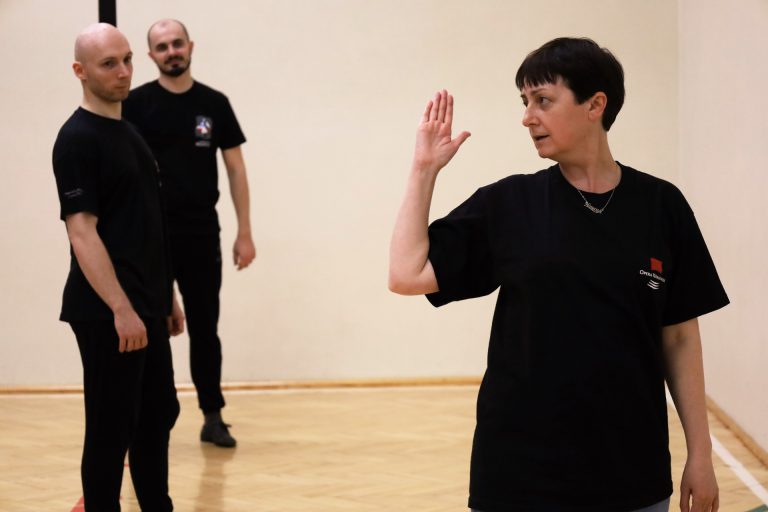Ukrainian traditions In Greater Poland
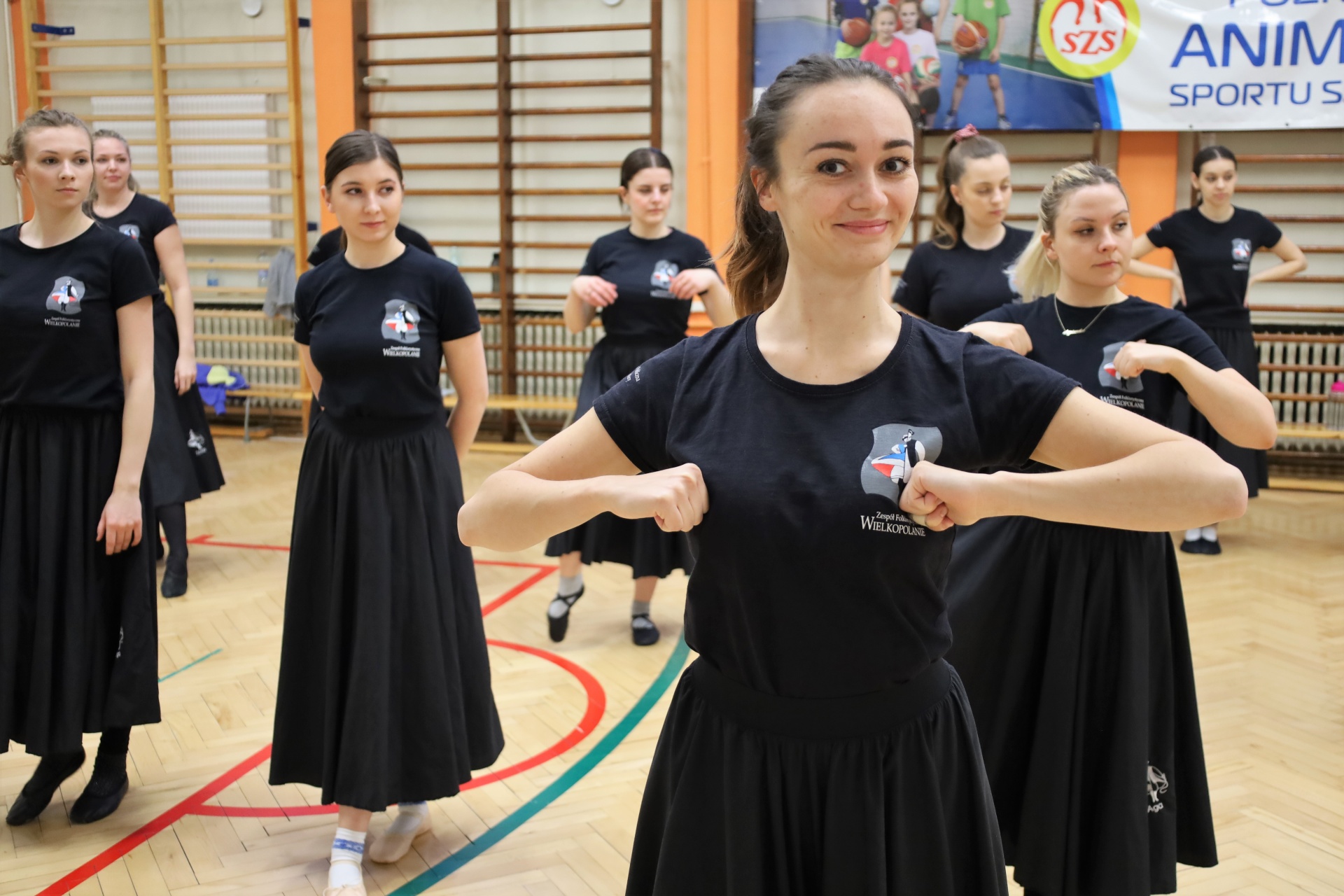

In April, the Folkloristic Group “Wielkopolanie” had an opportunity to invite and host Natalya Bondarchuk – a master of choreography and an expert of Ukrainian folklore. After the outbreak of the war in Ukraine, Nalatalya and her daughter Nastiya left Lviv and came to Krakow, where they conducted workshops for schools, kindergartens and groups, teaching about music and dance culture of Ukraine. Then from Krakow, they came to Poznan.
In the capital of Greater Poland, during five days of the workshops, Natalya presented an extremely wealthy and lively folklore of several Ukrainian regions, enriching it with historical curiosities, a show of costumes and authentic performances. During the first three days, the dancers of the main group of “Wielkopolanie” got to know the Hutsuls culture.
Apart from Boykos, with which they border on the west, and Lemkos, it is one of the three main groups of highlanders living in the eastern part of the Carpathian arc. Today most of the Hutsuls live in Ukraine, close to the polish border, in the former Polish Borderlands. They can be divided into Galician, Bukovynian and Zakarpattian. As the newly arrived guest of “Wielkopolanie” said, they created an original, regional culture, including the dance culture, full of spontaneity, characteristic movements and figures, requiring extraordinary skills from its performers.
The Ukrainian choreographer prepared a Hutsul dance for the youth group of “Wielkopolanie”. The dance is called Kosmaczanka, coming from the village of Kosmacz, located next to the Pistyna river. Kosmacz is one of the oldest settlements in the Hutsul region, in the Kosovo district of the Ivano-Frankivsk region. In the original choreography of Volodymyr Petryk, “Wielkopolanie” learned the characteristic dances among which they met: “Kolomyjki” usually danced by six pairs; “Reszeto” (named after a large sieve), during which pairs rotate in a tight circle and its sequences and steps resemble sowing grain; “Huculka”, for several or several dozen people who grab their shoulders and dance in a circle until a crazy whirlwind. Men can add some variety to this dance by crouching and dancing with their knees bent to the ground, and then jumping up like “pikes” singing and shouting.
As the old Hutsul saying goes: “Dance, dance, but not too hard or you will miss your Salvation!”
During the workshops, the dancers of the group could get to know the extremely inventive Hutsul music, filled with the wealthy sounds of characteristic instruments. Among the classical instruments, we can distinguish a violin, a “telenc” (hazel wood overtone flute) played with one finger, and a “sopilka” (a kind of three-part shepherd’s flute), which imitates the singing of birds using a slider to change the pitch. Other instruments found in traditional bands are a “fujara” (long flute) made of hazel wood, sycamore cymbals covered with spruce or fir wood and weighing from 9 to 12 kilograms, drums and “drymby” (Jewish harps) made of clock springs, on which women liked to play.
Traditional music bands walking around the countryside were called “Troisti Musiky” and consisted of violins, tambourines and “basoles” (basses) in the central regions and cymbals in the western regions. The first mentions of them appeared in Ukraine at the turn of the 17th and 18th centuries. “Troisti Musiky” (Musicians of the Trinity) played an important role in the life of the Ukrainian countryside. They took an active part in folk festivals, weddings, fairs and more, performing mainly dance and song melodies.
The next day of the workshops was dedicated to the older group of “Wielkopolanie”. The dancers had the opportunity to get acquainted with the wedding custom, especially a Hutsul wedding dance from the Werhowyn region – “Reszeto”. According to Natalya Bondarchuk, it was performed in a square form throughout the entire Hutsul region. The dance is filled with the multitude of figures, changeability of partners and is performed at the announcement of the leader called “wodzirej”. Above all of it, the dacne is extremely open to all participants, which was definitely introduced to the artists from Poznań . The choreographer mentioned humorously that if you survive a Hutsul wedding, you will survive everything! It is one of the most important family customs, which is, on the Hutsul land, preceded by three stages: courtship, matchmakers’ visit and engagement along with preparations for the main celebration, which also divides into three parts: pre-wedding, wedding and post-wedding. The celebrations usually start on Saturday at the homes of the bride (kniahynia) and the groom (kniaz). The bride prepares for the ceremony together with her bridesmaids, and traditionally she sewed a shirt for her fiancé and embroidered towels for his family. As the same time, the groom and the groomsmen prepare a wedding attribute at his home – “rozhen”, a pine stick decorated with colorful papers, ribbons and fruit. On Sunday morning, the parents say goodbye to the couple, followed by a speech of the staroste and a family dance at the table. Then the procession goes to the church, where the priest coronates the newlyweds. After the church ceremony, according to tradition, when the bride treats her guests with a wheat dough, the procession moves to her house. There, lively dances, customs and rituals last until Monday morning and are concluded with another speech by the village staroste. However this is not the end of the traditional celebration. After the speech, the participants of the wedding move to the groom’s house to continue the revel. The event, as the native inhabitants of the Hutsul region say, never ends!
The last day of Natalya’s work in Greater Poland was an open workshop for all the inhabitants of the region. Dozens of people, representatives of three generations, had the opportunity to learn about the dances and music of many regions of Ukraine. Children’s folklore was intertwined with music and dance culture intended for young and elder people. For several hours, the participants of the workshop learned the basic steps and figures of such dances as: “Reszeto” (a Hutsul dance), “Sopiloczka” (a dance for children), “Kosmaczanka”, “Gordeljanka” (a Bukovinian dance) and the dances from Central Ukraine: “Czerevyczky” and “Gopak” (Hopak). The last one belongs to the most spectacular dances of Ukrainian folklore. Performed in 2/4 time signature, at a lively pace, initially in the tradition only by men, now also by women. When it is danced, performers jump, turn and squat a lot, which requires an extraordinary coordination, condition and strength. During the workshop the dance was very popular, especially among men. The participants could also learn about the music culture and, of course, the costumes of various regions of Ukraine. Colorful, extremely dignified, distinctive elements of clothing reflected not only belonging to a social group, but also wealth and marital status. The color of the various parts of the clothing also played a role as it showed the age of the wearer. Young boys wore red clothes, middle-aged men wore brown, and black was reserved for the elderly – the same colors applied to women. In addition, there were some individual elements of the outfit that played a very important role. An example is the Hutsul hat, which was worn by bachelors with a feather on the left side, while married men attached the feather to its right side. Married women wore headscarves, while girls decorated their heads with braids. Red threads woven into hair formed a long braid, which could even reach the ground. Decorated with copper plates or decorative buttons, wrapped several times around the head, could form a form of a wreath.
Other elements of Hutsul clothing include “keptar” (short, white, sleeveless, richly embroidered sheepskin vest), “manta” for men or “gugla” for women (thick, gray linen coats and capes with colorful ornaments), “serdak” (jacket with embroidery on the collar and bottom front, used as an everyday outfit) and “postole” (leather shoes, usually with a pug nose). Instead of skirts in a woman’s wardrobe, colorful aprons were often worn both on front and back. Their decoration differs, depending on where in the Hutsul region they were made.
At the end of Natalia Bondarchuk’s stay in the Greater Poland region, there was a meeting at the Provincial Public Library and Cultural Animation Center in Poznan with the director Małgorzata Grupińska-Bis. They both announced the cooperation between the ensembles led by the Ukrainian choreographer and the group “Wielkopolanie” operating within the structures of the Library. The cooperation concerns the exchange of cultural experiences in the field of dance, music, customs and clothing.
It was a very intense week – seven days filled with history, Ukrainian traditions, learning about music and dance, culture of custom and costumes. Thanks to Natalya’s incredible knowledge, over a hundred people from three generations, could “touch” the truth of the Ukrainian lands, full of diversity, wealth and many unchanged values.
Natalya Bondarchuk – the artistic director and main choreographer of the Exemplary Children’s Dance Theater “Lewenya”, the “Eskada” Dance Theater and the “Third Line” of the Lviv Officers’ House. Member of the Board of the Lviv Branch of the Choreographic Union of Ukraine, the organizing committee of the P. Virski Ukrainian Choreographic Competition and the festival – Folk Choreography Competition of the Hero of Ukraine Myroslav Vantukh. Member of the jury and director of many Ukrainian and international festivals and competitions. Artistic director of the International Folklore Festival “Etnovyr”, which takes place in Lviv under the auspices of CIOFF (International Council of Organizations of Folklore Festivals and Folk Art) and head of the Folk Choreography Department of the Children and Youth Center of Galyczyn. Holder of the “Hetman of Ukraine Petro Sagajdaczny” badge for a significant contribution to strengthening the defense capabilities of Ukraine and shaping a high level of morale and military qualities among soldiers (2016), as well as the distinction of the Lviv Regional State Administration for “Children’s Volunteering” (2018). In December 2021, she was awarded the “Hero of Ukraine Myroslaw Wantuch” medal for achievements in the art of choreography.






